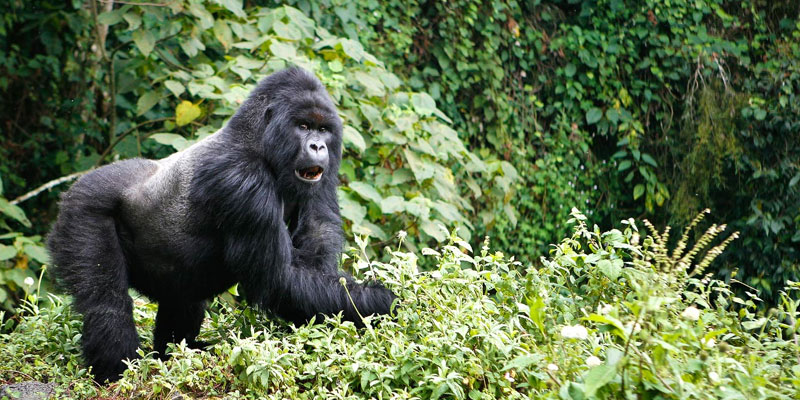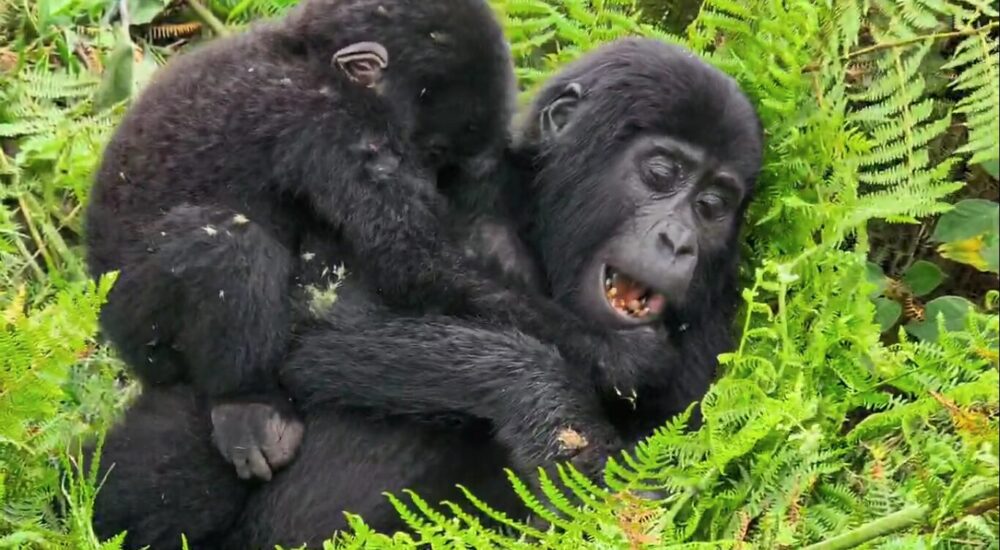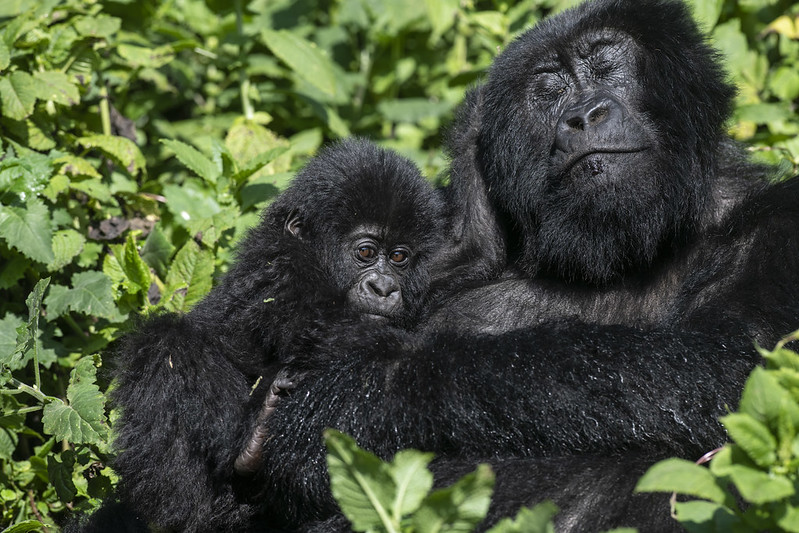Explore the importance of eco-friendly gorilla trekking and how it supports conservation and uplifts communities…
What is the Biggest Threat to Gorillas?
What is the Biggest Threat to Gorillas?
Gorillas are one of the most iconic and majestic species on Earth. Known for their gentle nature, intelligence, and social structure, gorillas are an integral part of the ecosystem. However, despite their strength and resilience, gorillas face numerous threats that put their survival at risk. From habitat loss and poaching to diseases and climate change, gorillas are vulnerable to a variety of dangers. In this article, we will explore what the biggest threats to gorillas are, with a particular focus on the factors that endanger their existence in the wild.
Understanding the Gorilla Species
There are two primary species of gorillas: the Eastern gorilla and the Western gorilla, each with distinct subspecies.
- Eastern Gorillas: This group includes the Mountain gorilla and the Eastern lowland gorilla (also known as the Grauer’s gorilla). Mountain gorillas live in the Virunga Mountains across Rwanda, Uganda, and the Democratic Republic of Congo (DRC), while the Eastern lowland gorillas are primarily found in the lowland forests of the DRC.
- Western Gorillas: This group consists of the Western lowland gorilla and the Cross River gorilla. Western lowland gorillas are found in the rainforests of central and West Africa, including countries like Cameroon, Gabon, and the Republic of the Congo. The Cross River gorilla, one of the most critically endangered species, is found along the border between Cameroon and Nigeria.
Each of these species and subspecies faces a unique set of challenges that threaten their survival in the wild. Let’s dive deeper into these threats.
1. Habitat Loss and Fragmentation
One of the most significant threats to gorillas is habitat loss. As human populations grow and urbanize, forests are cleared for agriculture, logging, mining, and infrastructure development. This results in habitat fragmentation, where gorillas are forced into smaller, isolated pockets of land that limit their access to food, water, and potential mates. Over time, this fragmentation can lead to inbreeding and a lack of genetic diversity, further endangering gorilla populations.
For example, in regions like the Virunga Mountains and Bwindi Impenetrable Forest in Uganda, deforestation for farming has increasingly encroached upon gorilla habitats. Similarly, in West and Central Africa, logging activities have threatened the dense rainforests that are crucial to gorilla survival.
Impact on Gorillas:
- Reduced Access to Food: Habitat loss directly reduces the availability of the vegetation that gorillas rely on for food, including fruits, leaves, and bamboo.
- Increased Human-Wildlife Conflict: As human populations expand into gorilla habitats, the risk of conflict increases. Farmers and communities may see gorillas as pests that damage crops, leading to the killing or relocation of gorillas.
- Disruption of Social Structures: Fragmentation can separate gorilla groups, making it difficult for them to maintain social bonds. Since gorillas live in tight-knit family groups, the separation of these groups can have severe consequences on their survival and reproduction.
2. Poaching and Illegal Wildlife Trade
Poaching is another significant threat to gorillas. Although gorillas are protected by law in all the countries where they are found, illegal hunting still occurs. Gorillas are targeted for their meat, body parts, and sometimes captured for illegal wildlife trade.![]()
Reasons for Poaching:
- Bushmeat Trade: In some regions of Central and West Africa, gorillas are hunted for their meat, which is considered a delicacy. The demand for bushmeat has led to the illegal killing of gorillas, as well as other endangered species.
- Illegal Trade: Gorillas are occasionally captured and sold as pets or zoo attractions. Infant gorillas are particularly vulnerable to this trade, as poachers often kill adult gorillas to capture their young. This type of poaching has a devastating impact on gorilla populations.
- Trophy Hunting: Although there are no legal hunting quotas for gorillas, they are sometimes killed by poachers who view them as trophies or simply seek to profit from their body parts.
Impact on Gorillas:
- Loss of Adult Gorillas: Poaching removes the adult members of a gorilla group, often leading to the collapse of family structures and the death of infants who rely on their mothers for survival.
- Disruption of Social Units: The loss of family members can severely impact the social dynamics of gorilla groups, leading to destabilization and fragmentation.
- Loss of Genetic Diversity: Poaching, especially for infants, can limit the genetic diversity of gorilla populations. This, in turn, reduces the overall health and adaptability of the species.
3. Diseases
Diseases are one of the most significant and often overlooked threats to gorillas. Due to the fact that gorillas share over 98% of their DNA with humans, they are susceptible to many of the same diseases that affect people. The transmission of human diseases, such as respiratory infections, Ebola, and malaria, can have devastating effects on gorilla populations.
Key Diseases Affecting Gorillas:
- Respiratory Infections: Gorillas can easily contract respiratory diseases from humans. Even a common cold or the flu can be fatal to gorillas due to their delicate immune systems.
- Ebola: The Ebola virus has had a severe impact on gorilla populations, particularly in Central Africa. In some instances, entire groups of gorillas have been wiped out by Ebola outbreaks.
- Malaria: Malaria is another disease that poses a threat to gorillas, especially those living in lower altitudes. Malaria can be fatal, particularly to infants and weaker individuals.
Impact on Gorillas:
- Population Declines: Disease outbreaks, especially Ebola, have led to dramatic declines in gorilla populations. For example, Ebola outbreaks in the 2000s killed a large portion of the Western lowland gorilla population.
- Social Disruption: Disease outbreaks can decimate entire groups, leading to the loss of social structure and the survival of the species.
- Increased Vulnerability: Gorillas weakened by disease are more susceptible to other threats, such as poaching and habitat loss.
4. Climate Change
As the world faces the growing impacts of climate change, gorillas are increasingly at risk. Climate change has the potential to disrupt gorilla habitats in several ways. Changes in temperature, precipitation patterns, and the frequency of extreme weather events can alter the availability of food sources and affect the ecosystems that gorillas rely on.
Effects of Climate Change:
- Shifts in Habitat: As temperatures rise, the elevation ranges where gorillas can live may shift. This could reduce the available habitat for mountain gorillas, which live at high altitudes in the Virunga Mountains. Similarly, changes in rainfall patterns may impact the forest ecosystems where Western gorillas thrive.
- Food Insecurity: Climate change could affect the growth of plants and fruits that gorillas depend on for nourishment. If these food sources become scarce, it could lead to malnutrition and population declines.
- Increased Frequency of Extreme Events: Severe weather events, such as storms and droughts, could damage the forests where gorillas live, leading to habitat destruction and fragmentation.
Impact on Gorillas:
- Loss of Suitable Habitat: Shifting climate zones could result in the loss of suitable habitats for gorillas, particularly mountain gorillas, who are already restricted to a small portion of the Virunga region.
- Resource Scarcity: If food becomes more difficult to find, gorillas may have to venture into human-inhabited areas, increasing the risk of conflict and poaching.
- Pressure on Conservation Efforts: Climate change may further strain conservation programs that are already working hard to protect gorilla populations from other threats.
5. Human-Wildlife Conflict
As human populations expand into gorilla habitats, human-wildlife conflict becomes a growing issue. In areas where forests are being cleared for agriculture, gorillas are increasingly coming into contact with local farmers and communities. Gorillas sometimes raid crops in search of food, leading to tension between humans and wildlife.
Causes of Conflict:
- Crop Raiding: Gorillas may venture into farmlands to forage for food, especially in areas where their natural habitat has been disturbed. This can lead to crop damage and loss of livelihood for local farmers.
- Retaliatory Killing: In response to crop raiding, some farmers may kill or capture gorillas, viewing them as pests.
- Livestock Predation: While gorillas primarily eat vegetation, they may sometimes prey on small livestock, further escalating conflict.
Impact on Gorillas:
- Killing and Injury: Gorillas that enter farmlands may be killed in retaliation by farmers who view them as a threat to their crops or livestock.
- Disturbance of Habitats: As human settlements and agricultural areas expand, gorillas are forced to move into less suitable areas, further fragmenting their habitat and increasing the risk of human-wildlife conflict.
Protecting Gorillas
The biggest threats to gorillas are varied and complex, ranging from habitat loss and poaching to diseases and climate change. These threats have combined to push many gorilla species to the brink of extinction. While significant strides have been made in gorilla conservation, particularly through ecotourism initiatives and the work of organizations like the Gorilla Doctors and The Dian Fossey Gorilla Fund, much work remains to be done.
To protect these incredible animals, continued efforts are needed to address the root


